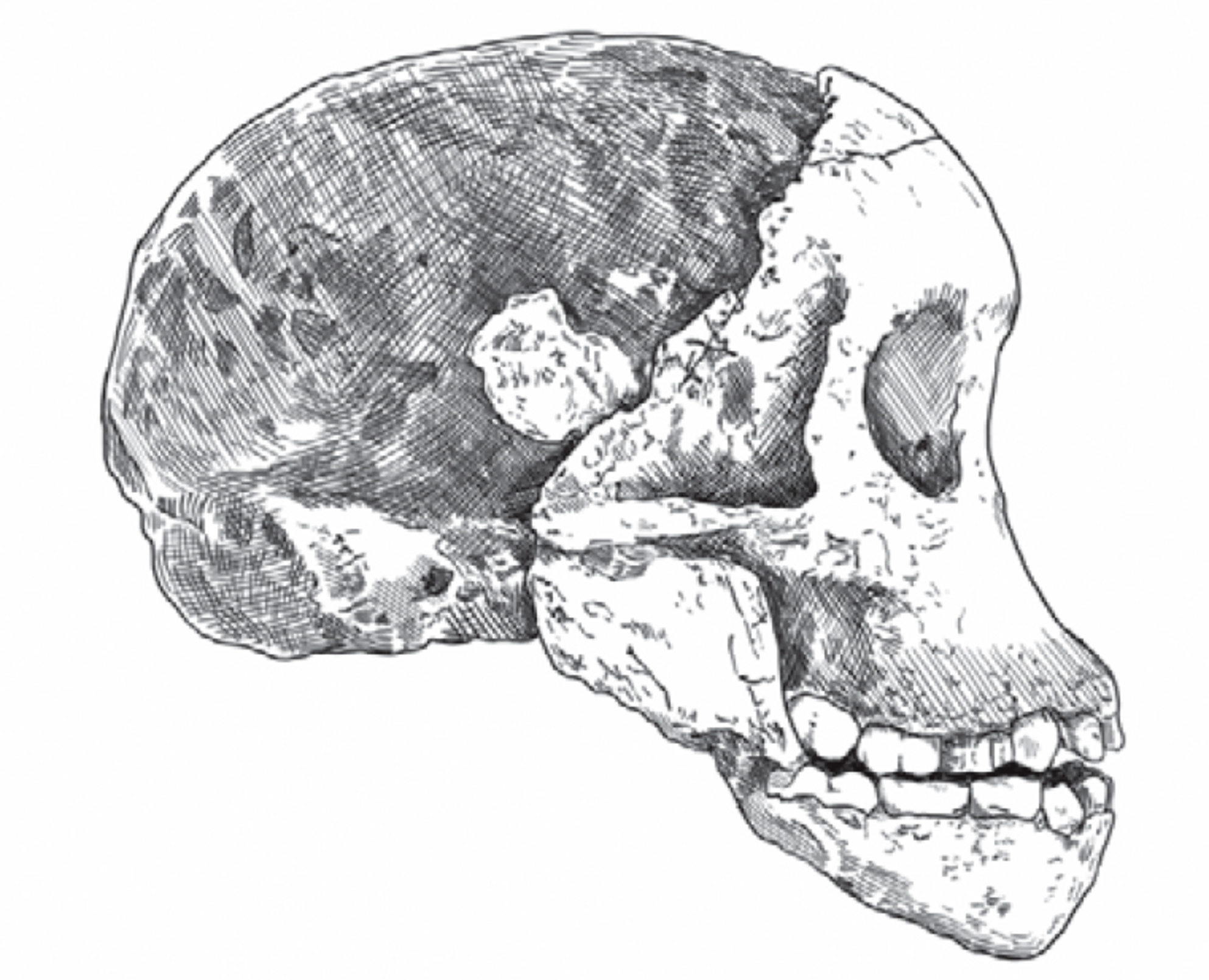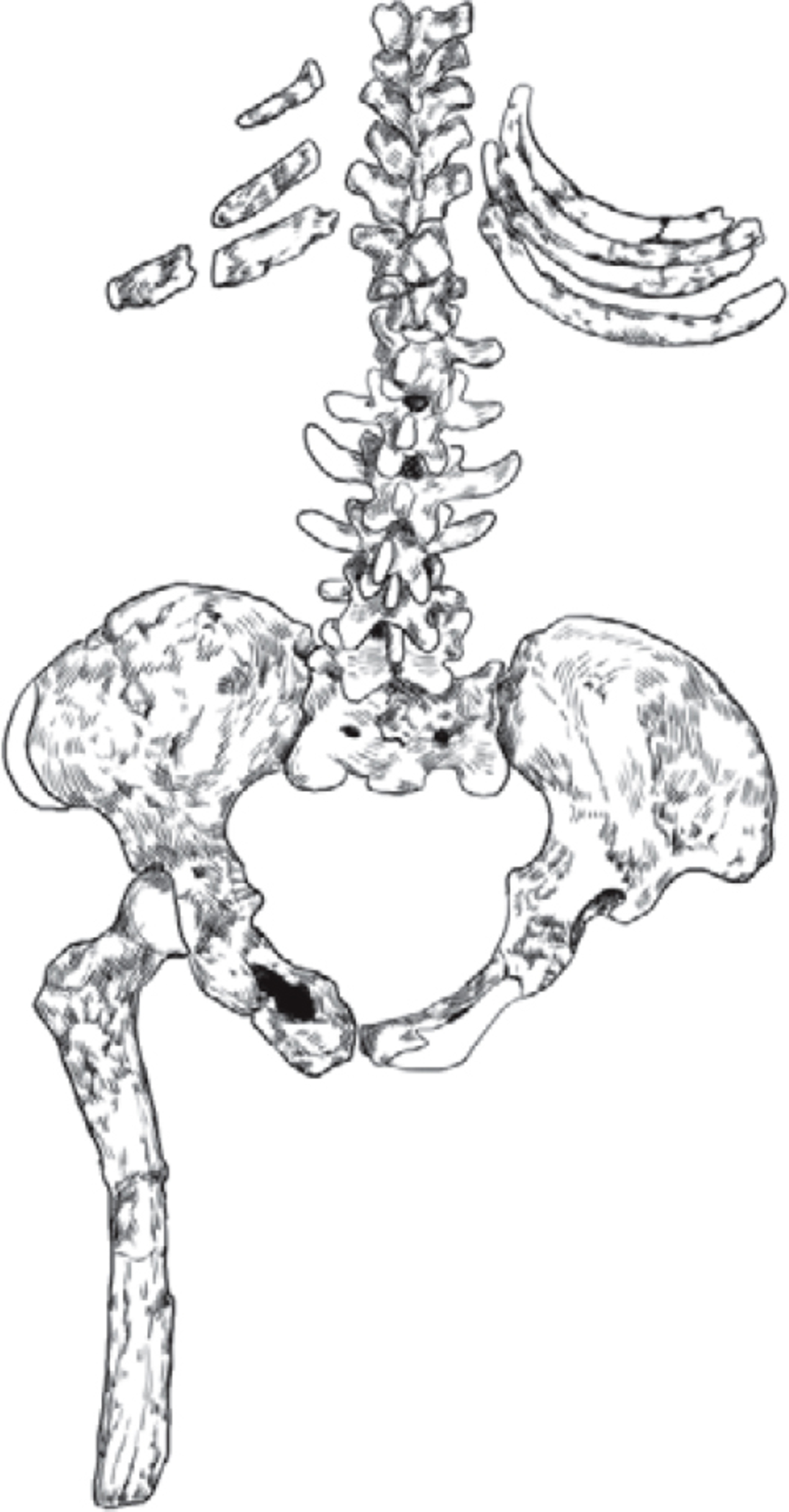3
On New Year’s Day 1990, I arrived in South Africa with the hope of finding hominin fossils. It was an unlikely place for an American student. The nation was still under the rule of the National Party, the apartheid government. Growing up in Georgia in the 1960s, I knew something about the evils of racial discrimination, and had seen firsthand the changes brought by integration. In South Africa, the winds of change were blowing, too. The government released Nelson Mandela from his long imprisonment in February 1990, and the end of apartheid was on the horizon.
I had been accepted as a Ph.D. student at the University of the Witwatersrand. Known to staff and students as “Wits,” the university is in the heart of downtown Johannesburg. Wits was semi-independent, but the government held the purse strings for the vast majority of research. Human evolution research could not be a priority, because it challenged the premise of apartheid by showing the common origin of all humankind. By the late 1980s, the science was clearly showing that our evolutionary roots began in Africa. The work of many scientists, in South Africa and elsewhere, defied the racial logic of the National Party. Research showed that there was no “natural” separation of the races—but that didn’t mean the apartheid government had to like it.
So paleoanthropology in South Africa was struggling. The science of human origins—a strength of the country for 70 years—was in visible decline. Wits was the university where the science of human evolution in Africa had gotten its start, and the home institution of Phillip Tobias—a living link to the field’s early history for me and many other anthropologists of my generation. A student of the late, great Raymond Dart, considered the father of African paleoanthropology, Phillip Tobias tied 70 years of discoveries together with his work. For me, learning this history was part of learning the field of paleoanthropology.

IN 1922 RAYMOND DART had come to Wits from Australia—then a hinterland of the British Empire, like South Africa—and had become a professor of anatomy. He found an open field with countless questions related to human history and diversity. Archaeologists had started to make some progress understanding the ancient peoples of southern Africa. Dart dived in, examining fragmentary skeletal remains that archaeologists sent to the department. Writing in the internationally respected journal Nature, he emphasized that South Africa had its own store of ancient races, just as interesting and ancient as the Neanderthals and Cro-Magnons of Europe.
In 1924 one of Dart’s students, Josephine Salmons, showed him a fossil baboon skull found in the Buxton Limeworks, near the town of Taung in what is today South Africa’s North West Province. It interested Dart, and he asked the limeworks to send any other rocks with bones. One that came was a natural fossil cast of the inside of a skull, called an endocast, from a large primate. It was exquisite, preserving much of the internal surface of the skull on the right side, its left side encrusted like a geode with sparkling crystals.
But this was no monkey, Dart immediately recognized. The brain was much larger than that of any baboon yet much smaller than any known human ancestor. Could it be a fossil of some kind of ape? It seemed unlikely, because the nearest apes—chimpanzees or gorillas—lived more than a thousand miles away.
Then Dart spied another rock. It contained part of a jawbone that connected with the endocast like a puzzle piece. There was a face inside the rock. For weeks, he removed chips of rock, slowly exposing the face of a tiny child with a full set of baby teeth and its first permanent molars just coming in. As he studied the precious specimen, he became convinced that this was like no ape anyone had ever seen before.
Dart sent his conclusions to Nature, which published them in February 1925. This skull was more humanlike than any of the living apes, yet it was not human. He called it a man-ape, and gave it the name Australopithecus africanus, meaning “southern ape from Africa.”
Charles Darwin had predicted that humans had originated in Africa. Now, with this African fossil much closer to humans than any living ape, Dart could show Darwin’s hunch to be right. In a matter of months, with the fossil that came to be known as the Taung Child, Raymond Dart had rewritten the story of human origins.


The skull, jaw, and endocast of the Taung Child
But a single fossil, extraordinary as it was, left plenty of room for argument. To begin with, it was just a child. Humans resemble juvenile apes more than we resemble adult apes, a fact that argued for caution. Another problem was the Taung Child’s posture. Using the broken base of the skull as evidence, Dart suggested that it stood upright. But other experts wanted to see bones of the lower limb—bones that Dart did not have. They also wanted to see the teeth, which Dart had not yet fully cleaned.
Experts looking at such a fossil, even today, consider three basic questions: How big was its brain? Did it stand upright? Are its teeth humanlike? These key characteristics help separate humans from apes: That was evident even to Charles Darwin in 1871, when the only ancient human fossils known were those of the Neanderthals, found in Europe.
Darwin had tied these three key characteristics together into one scenario of human origins: Larger brains made our ancestors more clever, leading them to develop tools and weapons. They needed free hands, and natural selection thus favored upright walking. Carrying new weapons, these ancient ancestors no longer needed large canine teeth. Other evolutionary developments were simply consequences of these three basic changes.
This scenario suggested that over time, our ancestors’ brains, posture, and teeth evolved in tandem with each other. The place of any fossil on this line of development should reflect its geological age. The older it is, the more like an ape the fossil would be. Where did the Taung Child fit in?
Raymond Dart had no solid idea how old these fossils might be. Baboon fossils found in similar crevasses within the rock were close to modern species, suggesting that the Taung Child might not be very old—but perhaps that did not contradict the idea that Taung lay between humans and other apes: a missing link in evolution.
Evolution gives rise to a tree of species whose branching formations and relationships paleoanthropologists seek to describe. For Dart, Australopithecus represented an unknown branch from the human stem, and one that offered evidence about the earliest period of human evolution. Other paleoanthropologists entered the scene, including Robert Broom, a Scottish physician who had worked for decades on South African fossil species, from reptiles to baboons. As Dart withdrew, wounded by skepticism expressed by colleagues about his discovery, Broom rose to the occasion, determined to find an adult fossil to match the Taung Child.
Students of Dart had been examining an impressive cave called Sterkfontein, about 50 kilometers northwest of Johannesburg, situated beneath a hillside rising up from the little Bloubank River. Visitors today pass through its natural opening and emerge into a yawning cavern with a great slope of loose debris. Huge stalactites and columns are visible, while side passages hide deeper secrets, including deep fossil-bearing chambers and an underground lake. Above the cave today, a catwalk stretches over a jumbled pit the size of a baseball diamond, full of blasted breccia, where scientists still work, finding fossils of hominins and other creatures.
In the 1930s, Sterkfontein was a working lime quarry. Raymond Dart’s students had been collecting monkey fossils there, and Broom accompanied them on one of their visits. Picking through the waste breccia piles, he found crushed pieces of face and jaw as well as worn teeth. These fossils were smashed, but they did provide him with evidence of the adult he was looking for, today identified alongside the Taung Child as Australopithecus africanus.
Over time, many more hominin specimens surfaced at Sterkfontein, including bones from the rest of the skeleton. Most striking was the skeleton of an adult female, with spine, ribs, pelvis, and parts of the legs, known as Sts 14. These postcranial bones—bones from parts of the body below the skull—revealed that the Sterkfontein species had stood upright and walked like humans.


Skeleton of Sts 14 from Sterkfontein
Even more exciting, Sterkfontein was not alone. There were caves and breccia deposits all up and down the valley. In 1938 a local boy handed Broom a fossil found on a farm just a kilometer east of Sterkfontein. Exploring the breccia there, Broom and his team recovered part of a hominin skull and a jaw more massive than those from Sterkfontein, with larger molar teeth. Broom recognized it as a different species, now called Paranthropus robustus.
Later, working at a cave just to the west of Sterkfontein called Swartkrans, Broom found more massive jaws and molars of robustus. Meanwhile, Raymond Dart and his student Phillip Tobias began fieldwork at a site called Makapansgat in the Northern Province, which ultimately yielded more fossils of Australopithecus africanus, like those from Sterkfontein.
It was a golden age for paleoanthropology in South Africa. Between 1936 and 1951, the fossil hominin record grew to scores of specimens from five more major sites. Broom published several books with scientific descriptions of the new fossils he had found, and Dart launched a series of new provocative ideas about the way these early human ancestors may have used tools and fire.
Then, discoveries of new early hominin sites stopped.
That is not to say all research stopped. The known sites would continue to be the focus of work for years, continuing up to today. And archaeologists in other parts of the country turned up a few fossils of ancient humans along with much evidence of their tools and the animals they hunted for prey. But no one was finding new fossil sites, at least not in South Africa. For a while, it seemed that all the excitement was in East Africa.